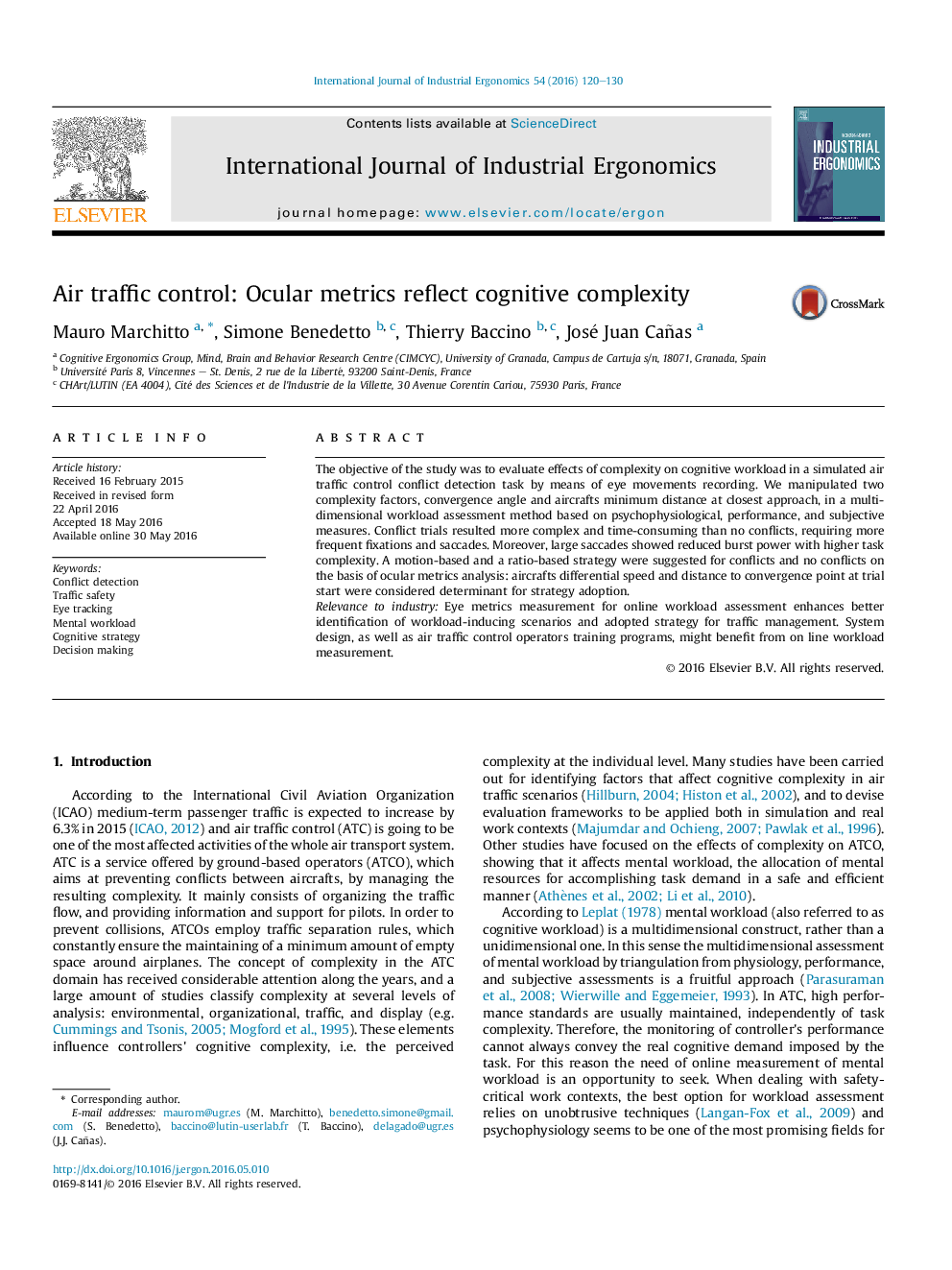| کد مقاله | کد نشریه | سال انتشار | مقاله انگلیسی | نسخه تمام متن |
|---|---|---|---|---|
| 1095789 | 1487421 | 2016 | 11 صفحه PDF | دانلود رایگان |
• We monitor conflict detection task performance in simulated air traffic control scenarios.
• We evaluate workload at psychophysiological, performance, and subjective level after manipulating two complexity factors.
• Conflicts are more complex than no conflicts, with more fixations and saccades, and reduced burst power of large saccades.
• The adoption of a ratio-based strategy in no conflicts and a motion-based strategy for conflicts is suggested.
The objective of the study was to evaluate effects of complexity on cognitive workload in a simulated air traffic control conflict detection task by means of eye movements recording. We manipulated two complexity factors, convergence angle and aircrafts minimum distance at closest approach, in a multidimensional workload assessment method based on psychophysiological, performance, and subjective measures. Conflict trials resulted more complex and time-consuming than no conflicts, requiring more frequent fixations and saccades. Moreover, large saccades showed reduced burst power with higher task complexity. A motion-based and a ratio-based strategy were suggested for conflicts and no conflicts on the basis of ocular metrics analysis: aircrafts differential speed and distance to convergence point at trial start were considered determinant for strategy adoption.Relevance to industryEye metrics measurement for online workload assessment enhances better identification of workload-inducing scenarios and adopted strategy for traffic management. System design, as well as air traffic control operators training programs, might benefit from on line workload measurement.
Journal: International Journal of Industrial Ergonomics - Volume 54, July 2016, Pages 120–130
